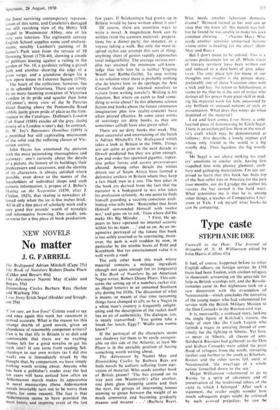London pride
MICHAEL BOBBIE
Catalogue of the Oil Paintings in the London Museum John Hayes (Etmso 100s)
The Empire may have vanished but London is still our century's Byzantium, the 'city of the world's desire', and London books con- tinue to roll off the presses to feed its ap- parently inexhaustible market. This latest distinguished addition to the capital's biblio- graphy, by the director of its own museum, is much more than its title would suggest. The London Museum's collection of paint- ings is an archive of topographical, historical and social information, as well as an assemb- lage of works of art; and John Hayes has exploited his catalogue, sithich has of course all the usual weighty apparatus of attribu- tions, derivations, exhibitions, publications. etc, as a peg on which to hang a series of detailed and highly entertaining essays on London topographical and social history.
The result is a visual and verbal feast for London lovers. The author sets the scene with a learned introduction on London as seen through artists' eyes, from the famous fifteenth century miniature of the Tower in the poems of Charles of Orleans in the Brit- ish Museum, to the electric brilliances of Kokoschka, illustrated where necessary by paintings outside the museum's collection. The catalogue proper describes and illus- trates, mostly with photographs, every oil painting in the London Museum except for a few unconnected with London.
The paintings themselves are a mixed bag artistically, as one would expect in a collec- tion formed primarily as an archive and bulk up with a microscopic budget. They never- theless include a surprising number of works of the first quality and importance, such as the Dutch School painting of the Great Fires
the finest surviving contemporary represen- tation of this scene, and Canaletto's damaged but still ravishing View of the Henry VII chapel in Westminster Abbey, one of his very rare interiors. The eighteenth century English School supplies some cool enchant- ments, notably Lambert's painting of St James's Park seen from the terrace of 10 Downing Street (1736-40), showing a couple of politicos leaning against a railing in the garden of No. 10, a gardener rolling a gravel path and another shearing the edge of a grass verge; and a grandiose design for a new opera house in Leicester Square (1790).
The heart of the collection, however, lies in its splendid Victoriana. There can surely be no more haunting evocation of Victorian London in its pride and squalor than John O'Connor's misty view of the St Pancras Hotel floating above the Pentonville Road (1884), justly given pride of place as the fron- tispiece to the Catalogue. Dollman's London Cab Stand (1888) exudes all the grey, slushy misery of a London winter's day. In contrast, G. W. Joy's Bayswater Omnibus (1895) is a prettified but still captivating microcosm of the solid and the suffering classes of Vic- torian society.
John Hayes has annotated the pictures with the most painstaking thoroughness and accuracy: one's curiosity about the details of a picture, the history of its buildings, their predecessors and successors, and the identity of its characters, is always satisfied where possible, even down to the names of the leaseholders of individual shops and such esoteric information, a propos of J. Baber's Skating on the Serpentine (1839, after J. Chalon, 1823), that skating is nowadays al- lowed only when the ice is five inches thick. All in all a fine piece of scholarly work and a very good five pounds' worth of nostalgic and informative browsing. Due credit, too, to to4so for a fine piece of book production.































 Previous page
Previous page